Carbon
|
WikiDoc Resources for Carbon |
|
Articles |
|---|
|
Media |
|
Evidence Based Medicine |
|
Clinical Trials |
|
Ongoing Trials on Carbon at Clinical Trials.gov Clinical Trials on Carbon at Google
|
|
Guidelines / Policies / Govt |
|
US National Guidelines Clearinghouse on Carbon
|
|
Books |
|
News |
|
Commentary |
|
Definitions |
|
Patient Resources / Community |
|
Directions to Hospitals Treating Carbon Risk calculators and risk factors for Carbon
|
|
Healthcare Provider Resources |
|
Continuing Medical Education (CME) |
|
International |
|
|
|
Business |
|
Experimental / Informatics |
Editor-In-Chief: C. Michael Gibson, M.S., M.D. [1]
Template:Infobox carbon
Carbon (Template:PronEng) is a chemical element with the symbol C and atomic number 6. It is a group 14, nonmetallic, tetravalent element, that presents several allotropic forms of which the best known are graphite (the thermodynamically stable form under normal conditions), diamond, and amorphous carbon.[1] There are three naturally occurring isotopes: 12C and 13C are stable, and 14C is radioactive, decaying with a half-life of about 5700 years.[2] Carbon is one of the few elements known to man since antiquity.[3][4] The name "carbon" comes from Latin language carbo, coal, and in some Romance languages, the word carbon can refer both to the element and to coal.
It is the fourth most abundant element in the universe by mass after hydrogen, helium, and oxygen. It is present in all known lifeforms, and in the human body it is the second most abundant element by mass (about 18.5%) after oxygen.[5] This abundance, together with the unique diversity of organic compounds and their unusual polymer-forming ability at the temperatures commonly encountered on Earth, make this element the chemical basis of all known life.
The physical properties of carbon vary widely with the allotropic form. For example, diamond is highly transparent, while graphite is opaque and black. Diamond is among the hardest materials known, while graphite is soft enough to form a streak on paper. Diamond has a very low electric conductivity, while graphite is a very good conductor. Also, diamond has the highest thermal conductivity of all known materials under normal conditions. All the allotropic forms are solids under normal conditions.
All forms of carbon are highly stable, requiring high temperature to react even with oxygen. The most common oxidation state of carbon in inorganic compounds is +4, while +2 is found in carbon monoxide and other transition metal carbonyl complexes. The largest sources of inorganic carbon are limestones, dolomites and carbon dioxide, but significant quantities occur in organic deposits of coal, peat, oil and methane clathrates. Carbon forms more compounds than any other element, with almost ten million pure organic compounds described to date, which in turn are a tiny fraction of such compounds that are theoretically possible under standard conditions.[6]
Characteristics
Carbon exhibits remarkable properties, some paradoxical. Its different forms or allotropes (see below) include the hardest naturally occurring substance (diamond) and also one of the softest substances (graphite) known. Moreover, it has a great affinity for bonding with other small atoms, including other carbon atoms, and is capable of forming multiple stable covalent bonds with such atoms. Because of these properties, carbon is known to form nearly ten million different compounds, the large majority of all chemical compounds.[6] Moreover, carbon has the highest melting/sublimation point of all elements. At atmospheric pressure it has no actual melting point as its triple point is at 10 MPa (100 bar) so it sublimates above 4000 K. Carbon sublimes in a carbon arc which has a temperature of about 5800K. Thus irrespective of its allotropic form, carbon remains solid at higher temperatures than the highest melting point metals such as tungsten or rhenium. Although thermodynamically prone to oxidation, carbon resists oxidation more effectively than elements such as iron and copper that are weaker reducing agents at room temperature.
Carbon compounds form the basis of all life on Earth and the carbon-nitrogen cycle provides some of the energy produced by the Sun and other stars. Although it forms an extraordinary variety of compounds, most forms of carbon are comparatively unreactive under normal conditions. At standard temperature and pressure, it resists all but the strongest oxidizers. It does not react with sulfuric acid, hydrochloric acid, chlorine or any alkalis. At elevated temperatures carbon reacts with oxygen to form carbon oxides, and will reduce such metal oxides as iron oxide to the metal. This exothermic reaction is used in the iron and steel industry to control the carbon content of steel:
Fe
3O
4 + 4C(s) → 3Fe(s) + 4CO(g)
with sulfur to form carbon disulfide and with steam in the coal-gas reaction
C(s) + H2O(g) → CO(g) + H2(g).
Carbon combines with some metals at high temperatures to form metallic carbides, such as the iron carbide cementite in steel, and tungsten carbide, widely used as an abrasive and for making hard tips for cutting tools.
The system of carbon allotropes spans a range of extremes:
| Synthetic diamond nanorods are the hardest materials known. | Graphite is one of the softest materials known. |
| Diamond is the ultimate abrasive. | Graphite is a very good lubricant. |
| Diamond is an excellent electrical insulator. | Graphite is a conductor of electricity. |
| Diamond is the best known thermal conductor | Some forms of graphite are used for thermal insulation (i.e. firebreaks and heatshields) |
| Diamond is highly transparent. | Graphite is opaque. |
| Diamond crystallizes in the cubic system. | Graphite crystallizes in the hexagonal system. |
| Amorphous carbon is completely isotropic. | Carbon nanotubes are among the most anisotropic materials ever produced. |
Allotropes
Atomic carbon is a very short-lived specie and therefore, carbon is stabilized in various multi-atomic structures with different molecular configurations called allotropes. The three relatively well-known allotropes of carbon are amorphous carbon, graphite, and diamond. Once considered exotic, fullerenes are nowadays commonly synthesized and used in research; they include buckyballs,[7][8] carbon nanotubes,[9] carbon nanobuds[10] and nanofibers,[11].[12] Several other exotic allotropes have also been discovered, such as aggregated diamond nanorods,[13] lonsdaleite,[14] glassy carbon,[15] carbon nanofoam[16] and linear acetylenic carbon.[17]
- The amorphous form, is an assortment of carbon atoms in a non-crystalline, irregular, glassy state, which is essentially graphite but not held in a crystalline macrostructure. It is present as a powder, and is the main constituent of substances such as charcoal, lampblack (soot) and activated carbon.
- At normal pressures carbon takes the form of graphite, in which each atom is bonded trigonally to three others in a plane composed of fused hexagonal rings, just like those in aromatic hydrocarbons. The resulting network is 2-dimensional, and the resulting flat sheets are stacked and loosely bonded through weak Van der Waals forces. This gives graphite its softness and its cleaving properties (the sheets slip easily past one another). Because of the delocalization of one of the outer electrons of each atom to form a π-cloud, graphite conducts electricity, but only in the plane of each covalently bonded sheet. This results in a lower bulk electrical conductivity for carbon than for most metals. The delocalization also accounts for the energetic stability of graphite over diamond at room temperature.

- At very high pressures carbon forms the more compact allotrope diamond, having nearly twice the density of graphite. Here, each atom is bonded tetrahedrally to four others, thus making a 3-dimensional network of puckered six-membered rings of atoms. Diamond has the same cubic structure as silicon and germanium and, thanks to the strength of the carbon-carbon bonds is the hardest naturally occurring substance in terms of resistance to scratching. Contrary to the popular belief that "diamonds are forever", they are in fact thermodynamically unstable under normal conditions and transform into graphite.[1] But due to a high activation energy barrier, the transition into graphite is so extremely slow at room temperature as to be unnoticeable. Under some conditions, carbon crystallizes as Lonsdaleite, a form similar to diamond but forming a hexagonal crystal lattice.[14]
- Fullerenes have a graphite-like structure, but instead of purely hexagonal packing, they also contain pentagons (or even heptagons) of carbon atoms, which bend the sheet into spheres, ellipses or cylinders. The properties of fullerenes (split into buckyballs, buckytubes and nanobuds) have not yet been fully analyzed and represents an intense are of research in nanomaterials. The name "fullerene" is given after Richard Buckminster Fuller, developer of some geodesic domes, which resemble the structure of fullerenes. The buckyballs are fairly large molecules formed completely of carbon bonded trigonally, forming spheroids (the best-known and simplest is the soccerball-shaped structure C60 buckminsterfullerene).[7] Carbon nanotubes are structurally similar to buckyballs, except that each atom is bonded trigonally in a curved sheet that forms a hollow cylinder.[8][9] Nanobuds were first published in 2007 and are hybrid bucky tube/buckyball materials (buckyballs are covalently bonded to the outer wall of a nanotube) that combine the properties of both in a single structure.[10]
- Of the other discovered allotropes, aggregated diamond nanorods have been synthesised in 2005 and are believed to be the hardest substance known yet.[18] Carbon nanofoam is a ferromagnetic allotrope discovered in 1997. It consists of a low-density cluster-assembly of carbon atoms strung together in a loose three-dimensional web, in which the atoms are bonded trigonally in six- and seven-membered rings. It is among the lightest known solids, with a density of about 2 kg/m³.[19] Similarly, glassy carbon contains a high proportion of closed porosity.[15] But unlike normal graphite, the graphitic layers are not stacked like pages in a book, but have a more random arrangement. Linear acetylenic carbon[17] has the chemical structure[20] -(C:::C)n- .Carbon in this modification is linear with sp orbital hybridisation, and is a polymer with alternating single and triple bonds. This type of carbyne is of considerable interest to nanotechnology as its Young's modulus is forty times that of the hardest known material - diamond.[21]
Occurrence

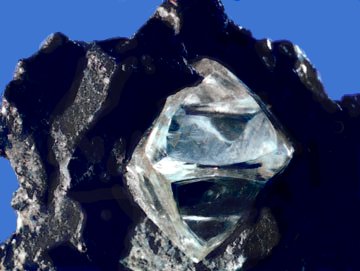
Carbon is the fourth most abundant chemical element in the universe by mass after hydrogen, helium, and oxygen. Carbon is abundant in the Sun, stars, comets, and in the atmospheres of most planets. Some meteorites contain microscopic diamonds that were formed when the solar system was still a protoplanetary disk. Microscopic diamonds may also be formed by the intense pressure and high temperature at the sites of meteorite impacts.[22]
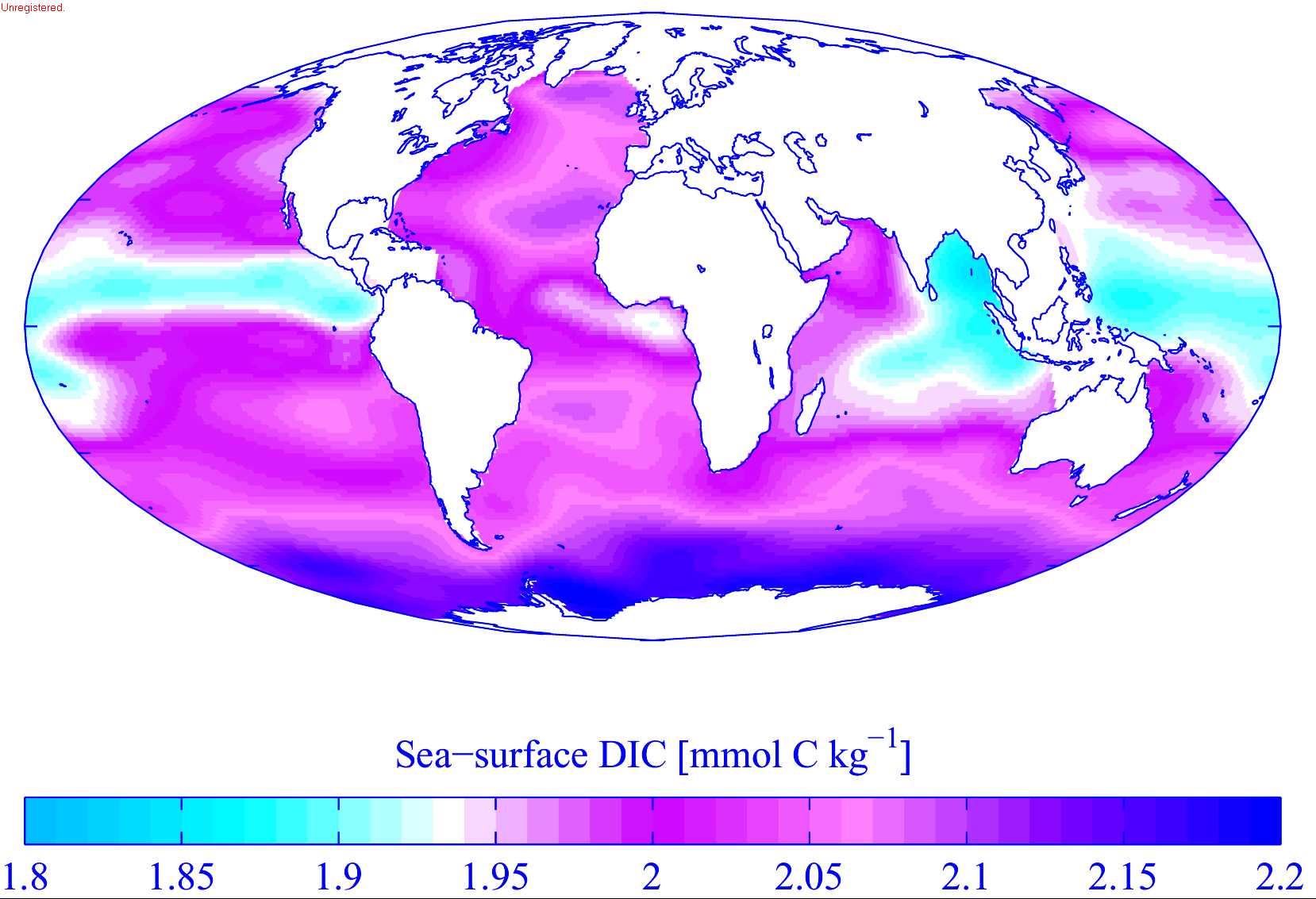
In combination with oxygen in carbon dioxide, carbon is found in the Earth's atmosphere (in quantities of approximately 810 gigatonnes) and dissolved in all water bodies (approximately 36000 gigatonnes). Around 1900 gigatonnes are present in the biosphere. Hydrocarbons (such as coal, petroleum, and natural gas) contain carbon as well — coal "reserves" (not "resources") amount to around 900 gigatonnes, and oil reserves around 150 gigatonnes. With smaller amounts of calcium, magnesium, and iron, carbon is a major component of very large masses carbonate rock (limestone, dolomite, marble etc.).
Coal is a significant commercial source of mineral carbon; anthracite containing 92-98% carbon and the largest source (4000 Gt, or 80% of coal, gas and oil reserves) of carbon in a form suitable for use as fuel.[23]
Graphite is found in large quantities in New York and Texas in the United States, Russia, Mexico, Greenland, and India.
Natural diamonds occur in the mineral kimberlite, found in ancient volcanic "necks," or "pipes". Most diamond deposits are in Africa, notably in South Africa, Namibia, Botswana, the Republic of the Congo, and Sierra Leone. There are also deposits in Arkansas, Canada, the Russian Arctic, Brazil and in Northern and Western Australia.
Carbon is also found in abundance in the Sun, stars, comets, and atmospheres of most planets. Diamonds are now also being recovered from the ocean floor off the Cape of Good Hope. About 30% of all industrial diamonds used in the U.S. are now made synthetically.
According to studies from the Massachusetts Institute of Technology, an estimate of the global carbon budget is:
| Biosphere, oceans, atmosphere | |
|---|---|
| 0.45 x 1018 kilograms (3.7 x 1018 moles) | |
| Crust | |
| Organic carbon | 13.2 x 1018 kg |
| Carbonates | 62.4 x 1018 kg |
| Mantle | |
| 1200 x 1018 kg | |
Carbon-14 is formed in upper layers of the troposphere and the stratosphere, at altitudes of 9–15 km, by a reaction that is precipitated by cosmic rays. Thermal neutrons are produced that collide with the nuclei of nitrogen-14, forming carbon-14 and a proton.
Isotopes
Isotopes of carbon are atomic nuclei that contain six protons plus a number of neutrons (varying from 2 to 16). Carbon has two stable, naturally occurring isotopes.[2] The isotope carbon-12 (12C) forms 98.93% of the carbon on Earth, while carbon-13 (13C) forms the remaining 1.07%.[2] The concentration of 12C is further increased in biological materials because biochemical reactions discriminate against 13C.[24] In 1961 the International Union of Pure and Applied Chemistry (IUPAC) adopted the isotope carbon-12 as the basis for atomic weights.[25] Identification of carbon in NMR experiments is done with the isotope 13C.
Carbon-14 (14C) is a naturally occurring radioisotope which occurs in trace amounts on Earth of up to 1 part per trillion (0.0000000001%), mostly confined to the atmosphere and superficial deposits, particularly of peat and other organic materials.[26] This isotope decays by 0.158 MeV β- emission. Because of its relatively short half-life of 5730 years, 14C is virtually absent in ancient rocks, but is created in the upper atmosphere (lower stratosphere and upper troposphere) by interaction of nitrogen with cosmic rays.[27] The abundance of 14C in the atmosphere and in living organisms is almost constant, but decreases predictably in their bodies after death. This principle is used in radiocarbon dating, discovered in 1949, which has been used extensively to determine the age of carbonaceous materials with ages up to about 40,000 years.[28][29]
There are 15 known isotopes of carbon and the shortest-lived of these is 8C which decays through proton emission and alpha decay and has a half-life of 1.98739x10-21 s.[30] The exotic 19C exhibits a nuclear halo, which means its radius is appreciably larger than would be expected if the nucleus was a sphere of constant density.[31]
Formation in stars
Formation of the carbon atomic nucleus requires a nearly simultaneous triple collision of alpha particles (helium nuclei) within the core of a giant or supergiant star. This happens in conditions of temperature and helium concentration that the rapid expansion and cooling of the early universe prohibited, and therefore no significant carbon was created during the Big Bang. Instead, the interiors of stars in the horizontal branch transform three helium nuclei into carbon by means of this triple-alpha process. In order to be available for formation of life as we know it, this carbon must then later be scattered into space as dust, in supernova explosions, as part of the material which later forms second- and third-generation star systems which have planets accreted from such dust. The Solar System is one such third-generation star system.
One of the fusion mechanisms powering stars is the carbon-nitrogen cycle.
Rotational transitions of various isotopic forms of carbon monoxide (e.g. 12CO, 13CO, and C18O) are detectable in the submillimeter regime, and are used in the study of newly forming stars in molecular clouds.
Carbon cycle
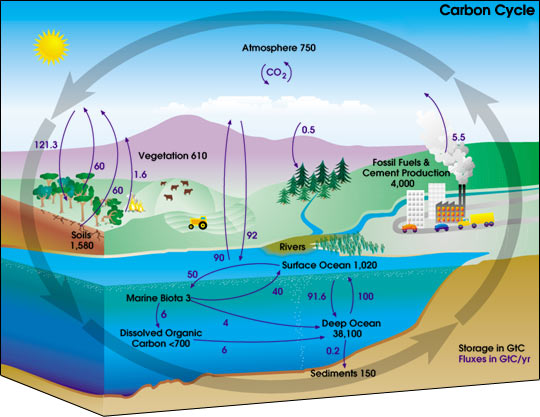
Under terrestrial conditions, conversion of one element to another is very rare. Therefore, the amount of carbon on Earth is effectively constant. Thus, processes that use carbon must obtain it somewhere and dispose of it somewhere else. The paths that carbon follows in the environment make up the carbon cycle. For example, plants draw carbon dioxide out of their environment and use it to build biomass, as in carbon respiration or the Calvin cycle, a process of carbon fixation. Some of this biomass is eaten by animals, whereas some carbon is exhaled by animals as carbon dioxide. The carbon cycle is considerably more complicated than this short loop; for example, some carbon dioxide is dissolved in the oceans; dead plant or animal matter may become petroleum or coal, which can burn with the release of carbon, should bacteria not consume it.
Compounds
Inorganic compounds
Commonly carbon-containing compounds which are associated with minerals or which do not contain hydrogen or fluorine, are treated separately from classical organic compounds; however the definition is not rigid (see reference articles above). Among these are the simple oxides of carbon. The most prominent oxide is carbon dioxide (CO
2). This was once the principal constituent of the paleoatmosphere, but is a minor component of the Earth's atmosphere today.[32] Dissolved in water, it forms carbonic acid (H
2CO
3), but as most compounds with multiple single-bonded oxygens on a single carbon it is unstable. Through this intermediate, though, resonance-stabilized carbonate ions are produced. Some important minerals are carbonates, notably calcite. Carbon disulfide (CS
2) is similar.
The other common oxide is carbon monoxide (CO). It is formed by incomplete combustion, and is a colorless, odorless gas. The molecules each contain a triple bond and are fairly polar, resulting in a tendency to bind permanently to hemoglobin molecules, displacing oxygen, which has a lower binding affinity.[33][34] Cyanide (CN–), has a similar structure, but behaves much like a halide ion (pseudohalogen). For example it can form the nitride cyanogen molecule ((CN)2), similar to diatomic halides. Other uncommon oxides are carbon suboxide (C
3O
2),[35] the unstable dicarbon monoxide (C2O),[36][37] and even carbon trioxide (CO3).[38][39]
With reactive metals, such as tungsten, carbon forms either carbides (C4–), or acetylides (C22–) to form alloys with high melting points. These anions are also associated with methane and acetylene, both very weak acids. With an electronegativity of 2.5,[40] carbon prefers to form covalent bonds. A few carbides are covalent lattices, like carborundum (SiC), which resembles diamond.
Organic compounds
Carbon has the ability to form very long chains with interconnecting C-C bonds. This property is called catenation. Carbon-carbon bonds are strong, and stable. This property allows carbon to form an almost infinite number of compounds; in fact, there are more known carbon-containing compounds than all the compounds of the other chemical elements combined except those of hydrogen (because almost all organic compounds contain hydrogen too).
The simplest form of an organic molecule is the hydrocarbon—a large family of organic molecules that are composed of hydrogen atoms bonded to a chain of carbon atoms. Chain length, side chains and functional groups all affect the properties of organic molecules. By IUPAC's definition, all the other organic compounds are functionalized compounds of hydrocarbons.

Carbon occurs in all organic life and is the basis of organic chemistry. When united with hydrogen, it forms various flammable compounds called hydrocarbons which are important to industry as chemical feedstock for the manufacture of plastics, petrochemicals and as fossil fuels.
When combined with oxygen and hydrogen, carbon can form many groups of important biological compounds including sugars, celluloses, lignans, chitins, alcohols, fats, and aromatic esters, carotenoids and terpenes. With nitrogen it forms alkaloids, and with the addition of sulfur also it forms antibiotics, amino acids and proteins. With the addition of phosphorus to these other elements, it forms DNA and RNA, the chemical codes of life, and adenosine triphosphate (ATP), the most important energy-transfer molecules in all living cells.
History and etymology
The English name carbon comes from the Latin carbo for coal and charcoal,[41] and hence comes French charbon, meaning charcoal. In German, Dutch and Danish, the names for carbon are Kohlenstoff, koolstof and kulstof respectively, all literally meaning coal-substance.


Carbon was discovered in prehistory and was known in the forms of soot and charcoal to the earliest human civilizations. Diamonds were known probably as early as 2500 BCE in China, while carbon in the forms of charcoal was made around Roman times by the same chemistry as it is today, by heating wood in a pyramid covered with clay to exclude air.[42][43]
In 1722, René A. F. de Réaumur demonstrated that iron was transformed into steel through the absorption of some substance, now known to be carbon.[44] In 1772, Antoine Lavoisier showed that diamonds are a form of carbon, when he burned samples of carbon and diamond then showed that neither produced any water and that both released the same amount of carbon dioxide per gram. Carl Wilhelm Scheele showed that graphite, which had been thought of as a form of lead, was instead a type of carbon.[45] In 1786, the French scientists Claude Louis Berthollet, Gaspard Monge and C. A. Vandermonde then showed that this substance was carbon.[46] In their publication they proposed the name carbone (Latin carbonum) for this element. Antoine Lavoisier listed carbon as an element in his 1789 textbook.[47]
A new allotrope of carbon, fullerene, that was discovered in 1985[48] includes nanostructured forms such as buckyballs and nanotubes.[7] Their discoverers received the Noble Prize in Chemistry in 1996.[49] The resulting renewed interest in new forms, lead to the discovery of further exotic allotropes, including glassy carbon, and the realization that "amorphous carbon" is not strictly amorphous.[15]
Applications


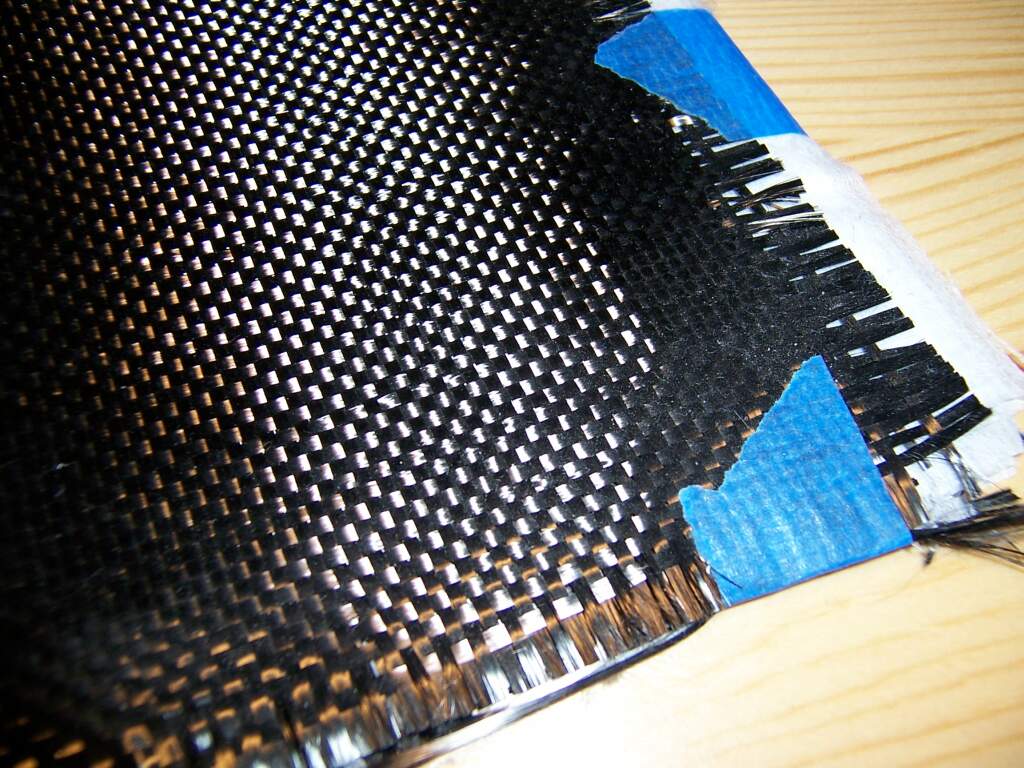

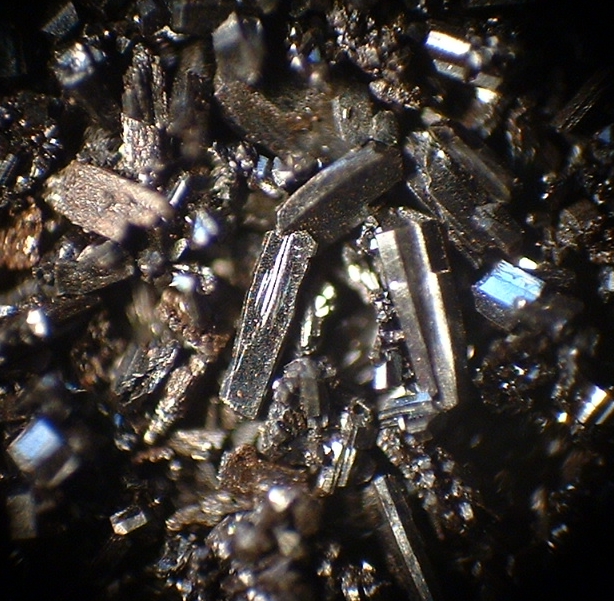

Carbon is essential to all known living systems, and without it life as we know it could not exist (see alternative biochemistry). The major economic use of carbon other than food and wood is in the form of hydrocarbons, most notably the fossil fuel] methane gas and crude oil (petroleum). Crude oil is used by the petrochemical industry to produce, amongst others, gasoline and kerosene, through a distillation process, in refineries. Cellulose is natural carbon-containing polymer produced by plants in the form of cellulose, cotton, linen, hemp. Commercially valuable carbon polymers of animal origin include wool, cashmere and silk. Plastics are made from synthetic carbon polymers, often with oxygen and nitrogen atoms included at regular intervals in the main polymer chain. The raw materials for many of these synthetic substances come from crude oil.
The uses of carbon and its compounds are extremely varied. It can form alloys with iron, of which the most common is carbon steel. Graphite is combined with clays to form the 'lead' used in pencils used for writing and drawing. It is also used as a lubricant and a pigment, as a moulding material in glass manufacture, in electrodes for dry batteries and in electroplating and electroforming, in brushes for electric motors and as a neutron moderator in nuclear reactors.
Charcoal is used as a drawing material in artwork, for grilling, and in many other uses including iron smelting. Wood, coal and oil are used as fuel for production of energy and space heating. Gem quality diamond is used in jewelry, and Industrial diamonds are used in drilling, cutting and polishing tools for machining metals and stone. Plastics are made from fossil hydrocarbons, and carbon fiber, made by pyrolysis of synthetic polyester fibers is used to reinforce plastics to form advanced, lightweight composite materials. Carbon fiber is made by pyrolysis of extruded and stretched filaments of polyacrylonitrile (PAN) and other organic substances. The crystallographic structure and mechanical properties of the fiber depend on the type of starting material, and on the subsequent processing. Carbon fibers made from PAN have structure resembling narrow filaments of graphite, but thermal processing may re-order the structure into a continuous rolled sheet. The result is fibers with higher specific tensile strength than steel.
Carbon black is used as the black pigment in printing ink, artist's oil paint and water colours, carbon paper, automotive finishes, India ink and laser printer toner. Carbon black is also used as a filler in rubber products such as tyres and in plastic compounds. Activated charcoal is used as an absorbent and adsorbent in filter material in applications as diverse as gas masks, water purification and kitchen extractor hoods and in medicine to absorb toxins, poisons, or gases from the digestive system. Carbon is used in chemical reduction at high temperatures. Coke is used to reduce iron ore into iron. Case hardening of steel is achieved by heating finished steel components in carbon powder. Carbides of silicon, tungsten, boron and titanium, are among the hardest known materials, and are used as abrasives in cutting and grinding tools. Carbon compounds make up most of the materials used in clothing, such as natural and synthetic textiles and leather, and almost all of the interior surfaces in the built environment other than glass, stone and metal.
Production
Graphite Production
Commercially viable natural deposits of graphite occur in many parts of the world, but the most important sources economically are in China, India, Brazil, and North Korea.[50] Graphite deposits are of metamorphic origin, found in association with quartz, mica and feldspars in schists, gneisses and metamorphosed sandstones and limestone as lenses or veins, sometimes of a metre or more in thickness. Deposits of graphite in Borrowdale, Cumberland, England were at first of sufficient size and purity that, until the 1800s, pencils were made simply by sawing blocks of natural graphite into strips before encasing the strips in wood. Today, smaller deposits of graphite are obtained by crushing the parent rock and floating the lighter graphite out on water.
Precautions
Pure carbon has extremely low toxicity and can be handled and even ingested safely in the form of graphite or charcoal. It is resistant to dissolution or chemical attack, even in the acidic contents of the digestive tract, for example. Consequently if it gets into body tissues it is likely to remain there indefinitely. Carbon black was probably one of the first pigments to be used for tattooing, and Ötzi the Iceman was found to have carbon tattoos that survived during his life and for 5200 years after his death.[51] However, inhalation of coal dust or soot (carbon black) in large quantities can be dangerous, irritating lung tissues and causing the congestive lung disease coalworker's pneumoconiosis. Similarly, diamond dust used as an abrasive can do harm if ingested or inhaled. Microparticles of carbon are produced in diesel engine exhaust fumes, and may accumulate in the lungs.[52] In these examples, the harmful effects may result from contamination of the carbon particles, with organic chemicals or heavy metals for example, rather than from the carbon itself.
Carbon may also burn vigorously and brightly in the presence of air at high temperatures, as in the Windscale fire, which was caused by sudden release of stored Wigner energy in the graphite core. Large accumulations of coal, which have remained inert for hundred of millions of years in the absence of oxygen, may spontaneously combust when exposed to air, for example in coal mine waste tips.
The great variety of carbon compounds include such lethal poisons as tetrodotoxin, the lectin ricin from seeds of the castor oil plant Ricinus communis, cyanide (CN-) and carbon monoxide; and such essentials to life as glucose and protein.
See also
References
- ↑ 1.0 1.1 "World of Carbon". Retrieved 2007-12-21.
- ↑ 2.0 2.1 2.2 "Carbon - Naturally occurring isotopes". WebElements Periodic Table. Retrieved 2007-12-08.
- ↑ "Periodic Table: Date of Discovery". Retrieved 2007-03-13.
- ↑ "Timeline of Element Discovery". Retrieved 2007-03-13.
- ↑ "Biological Abundance of Elements". Retrieved 2007-12-06.
- ↑ 6.0 6.1 Chemistry Operations (December 15, 2003). "Carbon". Los Alamos National Laboratory. Retrieved 2007-11-21. Check date values in:
|date=(help) - ↑ 7.0 7.1 7.2 Template:Citeweb
- ↑ 8.0 8.1 Template:Citebook
- ↑ 9.0 9.1 MS Dresselhaus, G Dresselhaus, Ph Avouris, ed. (2001). "Carbon nanotubes: synthesis, structures, properties and applications". Topics in Applied Physics. 80. Unknown parameter
|co-authors=ignored (help) - ↑ 10.0 10.1 "A novel hybrid carbon material". Nature Nanotechnology. 2: 156–161. 2007. Unknown parameter
|co-authors=ignored (help) - ↑ "Investigations of NanoBud formation". Chemical Physics Letters. 446: 109–114. 2007. Unknown parameter
|co-authors=ignored (help) - ↑ "Synthesis and characterisation of carbon nanofibres with macroscopic shaping formed by catalytic decomposition of C2H6/H2 over nickel catalyst". Applied Catalysis A. 274: 1–8. 2004. Unknown parameter
|co-authors=ignored (help) - ↑ "Diamonds are not forever". physicsweb.org. Retrieved 2007-12-21.
- ↑ 14.0 14.1 "Lonsdaleite, a new hexagonal polymorph of diamond". Nature. 214: 587–589. 1967. Unknown parameter
|co-authors=ignored (help) - ↑ 15.0 15.1 15.2 Harris, PJF (2004). "Fullerene-related structure of commercial glassy carbons". Philosophical Magazine, 84, 3159–3167. More than one of
|author=and|last=specified (help) - ↑ "Structural analysis of a carbon foam formed by high pulse-rate laser ablation". Applied Physics A-Materials Science & Processing. 69: S755–S758. 1999. Unknown parameter
|co-authors=ignored (help) - ↑ 17.0 17.1 Carbyne and Carbynoid Structures Series: Physics and Chemistry of Materials with Low-Dimensional Structures, Vol. 21 Heimann, R.B.; Evsyukov, S.E.; Kavan, L. (Eds.) 1999, 452 p., Hardcover ISBN 0-7923-5323-4
- ↑ "Aggregated Diamond Nanorods, the Densest and Least Compressible Form of Carbon". Retrieved 2007-12-21.
- ↑ "Carbon Nanofoam is the World's First Pure Carbon Magnet". Retrieved 2007-12-21.
- ↑ Carbyne and Carbynoid Structures Series: Physics and Chemistry of Materials with Low-Dimensional Structures, Vol. 21 Heimann, R.B.; Evsyukov, S.E.; Kavan, L. (Eds.) 1999, 452 p., Hardcover ISBN 0-7923-5323-4
- ↑ Harder than Diamond: Determining the Cross-Sectional Area and Young's Modulus of Molecular Rods, Lior Itzhaki et al, Angew. Chem. Int. Ed. 2005, 44, 7432-7435.
- ↑ Mark (1987). Meteorite Craters. University of Arizona Press. More than one of
|author=and|last=specified (help) - ↑ Kasting, James (1998). "The Carbon Cycle, Climate, and the Long-Term Effects of Fossil Fuel Burning". Consequences: The Nature and Implication of Environmental Change. 4 (1). More than one of
|author=and|last=specified (help) - ↑ Gannes, Leonard Z. (March 1998). "Natural Abundance Variations in Stable Isotopes and their Potential Uses in Animal Physiological Ecology". Comparative Biochemistry and Physiology - Part A: Molecular & Integrative Physiology. New York: Elsevier Science. 119 (3): 725&ndash, 737. doi:10.1016/S1095-6433(98)01016-2. Unknown parameter
|coauthors=ignored (help) - ↑ "Official SI Unit definitions". Retrieved 2007-12-21.
- ↑ Brown, Tom (March 1, 2006). "Carbon Goes Full Circle in the Amazon". Lawrence Livermore National Laboratory. Retrieved 2007-11-25. Check date values in:
|date=(help) - ↑ Bowman, S. (1990). Interpreting the past: Radiocarbon dating. British Museum Press. ISBN 0-7141-2047-2. More than one of
|author=and|last=specified (help) - ↑ Libby, WF (1952). Radiocarbon dating. Chicago University Press and references therein. More than one of
|author=and|last=specified (help) - ↑ Westgren, A. (1960). "The Nobel Prize in Chemistry 1960". Nobel Foundation. Retrieved 2007-11-25.
- ↑ "Use query for carbon-8". Retrieved 2007-12-21.
- ↑ "Beaming Into the Dark Corners of the Nuclear Kitchen". Retrieved 2007-12-21.
- ↑ Template:Citejournal
- ↑ Haldane J. (1895). "The action of carbonic oxide on man". Journal of Physiology. 18: 430-462.
- ↑ "The clinical toxicology of carbon monoxide". Toxicology (187): 25-38. 2003. Unknown parameter
|co-authors=ignored (help) - ↑ Template:Citeweb
- ↑ Template:Citejournal
- ↑ Template:Citejournal
- ↑ Template:Citejournal
- ↑ Template:Citejournal
- ↑ L. Pauling (1960). The Nature of the Chemical Bond (3rd ed. ed.). Ithaca, NY: Cornell University Press. p. 93.
- ↑ Shorter Oxford English Dictionary, Oxford University Press
- ↑ "Chinese made first use of diamond". BBC News. 17 May 2005. Retrieved 2007-03-21.
- ↑ van der Krogt, Peter. "Carbonium/Carbon at Elementymology & Elements Multidict". Retrieved 2007-12-21. More than one of
|author=and|last=specified (help) - ↑ Ferchault de Réaumur, R-A (1722). L'art de convertir le fer forgé en acier, et l'art d'adoucir le fer fondu, ou de faire des ouvrages de fer fondu aussi finis que le fer forgé (English translation from 1956). Paris, Chicago. More than one of
|author=and|last=specified (help) - ↑ Template:Citeweb
- ↑ Template:Citebook
- ↑ Template:Citeweb
- ↑ Template:Citejournal
- ↑ "The Nobel Prize in Chemistry 1996 "for their discovery of fullerenes"". Retrieved 2007-12-21.
- ↑ USGS Minerals Yearbook: Graphite, 2006
- ↑ L. Dorfer et al, 1998. 5200-year old acupuncture in Central Europe? Science 282, 242-243
- ↑ Donaldson K, Stone V, Clouter A, Renwick L, MacNee W (2001) Ultrafine particles. Occupational and Environmental Medicine 58, 211-216
- On Graphite Transformations at High Temperature and Pressure Induced by Absorption of the LHC Beam, J.M. Zazula, 1997
External links
- Carbon on Britannica
- WebElements.com – Carbon
- Chemicool.com – Carbon
- It's Elemental – Carbon
- Extensive Carbon page at asu.edu
- Electrochemical uses of carbon
- Computational Chemistry Wiki
- Carbon - Super Stuff. Animation with sound and interactive 3D-models.
- BBC Radio 4 series "In Our Time", on Carbon, the basis of life, 15 June 2006
- Introduction to Carbon Properties geared for High School students.
Template:Compact periodic table
Template:Link FA Template:Link FA Template:Link FA
af:Koolstof als:Kohlenstoff ar:كربون ast:Carbonu az:Karbon bn:কার্বন zh-min-nan:C (goân-sò͘) be:Вуглярод bg:Въглерод ca:Carboni cs:Uhlík co:Carboniu cy:Carbon da:Carbon de:Kohlenstoff et:Süsinik el:Άνθρακας eo:Karbono eu:Karbono fa:کربن fur:Carboni ga:Carbón gv:Carboan gd:Gualan gl:Carbono gu:કાર્બન ko:탄소 hy:Ածխածին hi:कार्बन hsb:Wuhlik hr:Ugljik io:Karbo id:Karbon ia:Carbon is:Kolefni it:Carbonio he:פחמן jv:Karbon kn:ಇಂಗಾಲ sw:Kaboni ht:Kabòn ku:Karbon la:Carbonium lv:Ogleklis lb:Kuelestoff lt:Anglis li:Koolstof ln:Kaboni jbo:tabno lmo:Carbòni hu:Szén mk:Јаглерод ml:കാര്ബണ് mi:Waro mr:कार्बन ms:Karbon mn:Нүүрстөрөгч nah:Tecolli nl:Koolstof no:Karbon nn:Karbon nov:Karbo oc:Carbòni uz:Uglerod nds:Kohlenstoff ksh:Kohlenstoff qu:K'illimsayaq sq:Karboni scn:Carbòniu simple:Carbon sk:Uhlík sl:Ogljik sr:Угљеник sh:Ugljenik su:Karbon fi:Hiili sv:Kol tl:Karbon ta:கரிமம் th:คาร์บอน tg:Карбон uk:Вуглець wa:Carbone vls:Carboun wuu:碳 yi:קוילנשטאף zh-yue:碳 bat-smg:Onglis